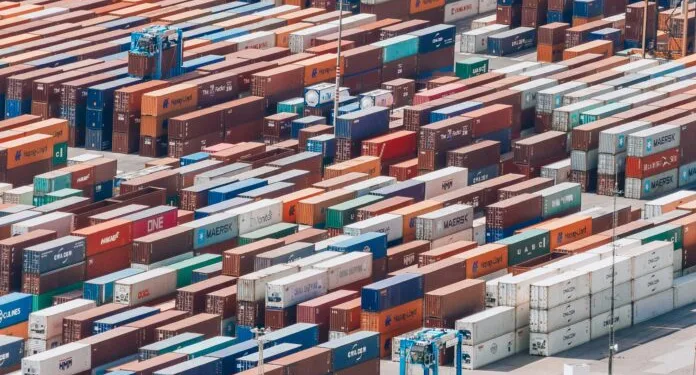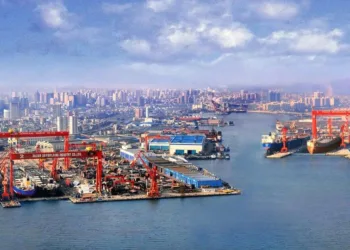
The US Supreme Court heard arguments last week in the appeal of lower court decisions that invalidated President Trump’s use of the International Emergency Economic Powers Act to impose fentanyl-related and reciprocal tariffs this year.
Questions and comments made by justices during the hearing gave the impression that the court is likely to rule against the administration. While there’s speculation that a decision could come as soon as the end of the year, the court has until the end of its term in June to issue a ruling.
Striking down this use of IEEPA could potentially open a low-tariff window for arriving goods from many countries. But the White House will certainly be motivated to close that window quickly and re-establish duties using other more-recognized legal paths for country-specific tariffs. These options include a trade law empowering the president to apply immediate 15% country-specific tariffs for 150 days which the administration could use as a first step to restoring tariffs through other means.
East-West ocean rates increased significantly on most lanes via November 1st General Rate Increases last week. Transpacific prices to the West Coast climbed 48% and $1,000/FEU to about $3,000/FEU, but daily rates so far this week are trending down slightly and rates to the East Coast remained about even with October levels.
There are reports indicating prices could fall back to their late October levels soon, which were themselves pushed up from year lows hit in early October via GRIs. Some carriers are announcing additional blanked sailings for the transpacific this month in moves to at least keep rates from backsliding to recent lows.
The current low demand period poses a challenge to carrier GRI ambitions. The latest National Retail Federation US ocean import report estimates October volumes sagged to about even with the previous lows for the year hit in May and June when US tariffs on China were at 145%. The report also projects that demand will ease further in November and December with double digit monthly decreases compared to last year as tariff frontloading has meant declining volumes since mid-August.
US ocean imports are expected to rebound during the lead up to Lunar New Year in January and early February, but these months are also projected to be down significantly year on year due to comparisons with Q1 2025 when frontloading began.
Asia – Europe rates climbed 9% to about $2,500/FEU last week with prices to the Mediterranean up 24% to $2,837/FEU on November GRIs. Some carriers have announced mid-month GRIs aiming to increase rates to the $3k/FEU mark for Asia-Europe as the long-term contract tendering season gets underway for this lane.
But in addition to the low demand challenge, carriers are also contending with continued fleet growth and climbing overcapacity. While Red Sea diversions last year were enough to keep rates well above long term norms, the monthly global rate benchmark has been lower year on year since March even as volumes have grown overall in 2025. A container traffic return to the Red Sea will, after a transition period, exacerbate the supply surplus. Reports this week of Houthis declaring an end to Red Sea attacks and carriers meeting with Suez Canal officials may mean the return to the Suez is getting closer.
In air cargo, the US government shutdown – which could end soon – has led to a shortage of air traffic controllers and the phase in of a 10% reduction in flights in the US which is disrupting domestic passenger travel and bellyhold air cargo operations along with it.
But as domestic freighters and international flights – which account for the bulk of the US air cargo market – are spared for now, the overall impact on air cargo should be minimal. Once the shutdown ends, airlines are expected to be able to restart their full flight schedules within 12-36 hours. Despite the delays, Freightos Air Index intra-North America rates have stayed stable at about $1.60/kg.
Changes to the US de minimis rules back in May meant a sharp initial drop in China-US e-commerce air cargo volumes, though recent data shows a gradual rebound in volumes since then as e-comm platforms adjust to the new rules – though not back to levels when de minimis was available.
Asia – Europe e-commerce air cargo volumes have shown nearly uninterrupted growth throughout the year as China’s e-commerce giants shifted focus to US alternatives, especially markets where de minimis exceptions are still in place. But there have been multiple signs of opposition to the flood of low cost goods entering these markets, including in the EU. Just this week France announced increased inspections of all e-commerce imports which is leading to backlogs at CDG.
But as has been the case since May, capacity shifts have meant that despite year on year volume declines transpacific rates remain elevated even if moderately below 2024 levels. China-US rates increased 4% to $6.30/kg last week on some likely peak season demand bump though prices were at about $7.00/kg last year. Likewise, despite volume growth, China-Europe rates which were at $3.92/kg last week, are about on par with prices in 2024.
Written by: Judah Levine, Head of Research, Freightos Group
The post Freightos Weekly Update: Ocean rates climb on GRIs despite demand slump appeared first on Container News.






















